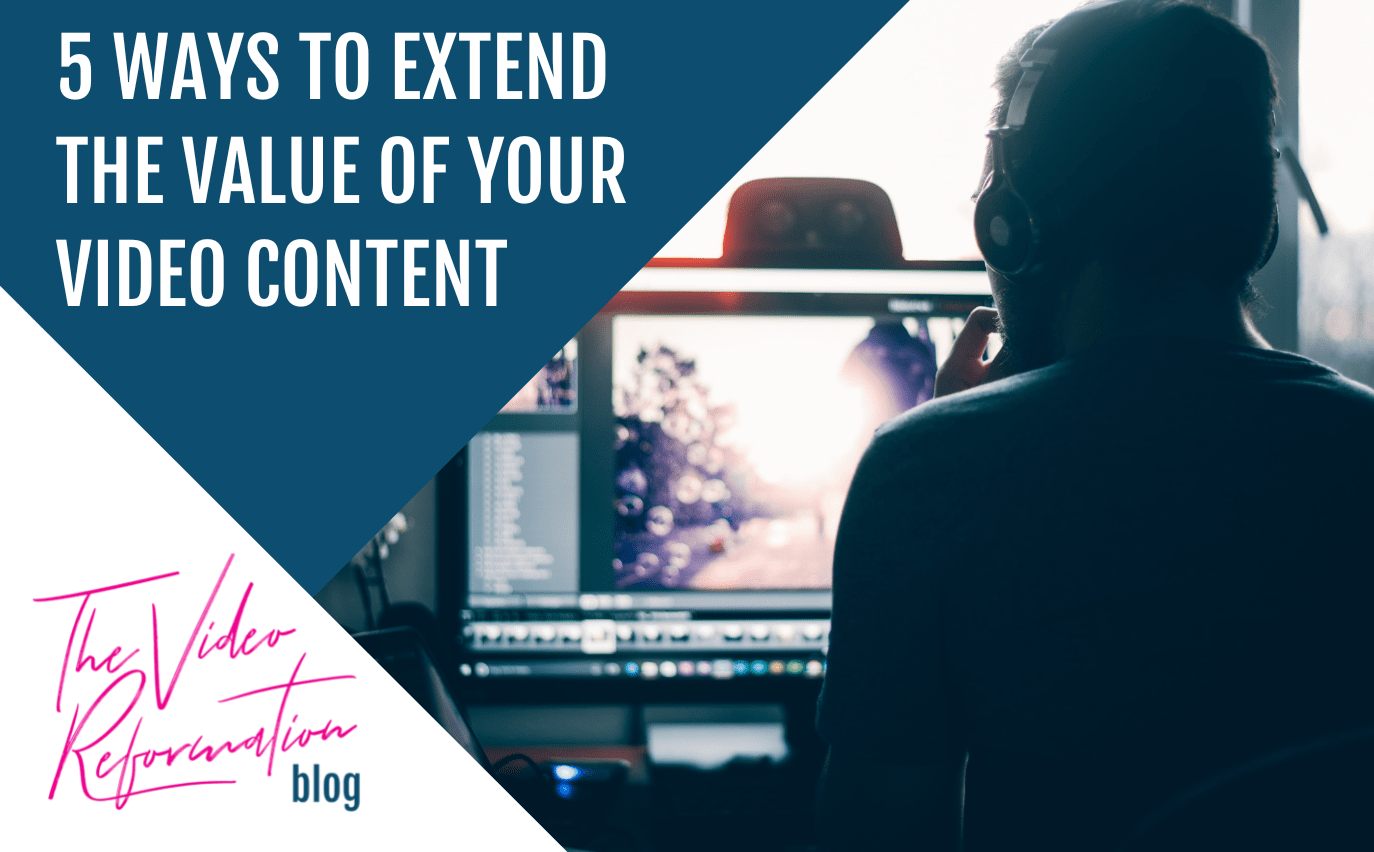When is a video more than a video? This may seem like a riddle, but it’s a question asked by marketers everywhere as they look to extract every last drop of value from the video content they’ve produced.
Video is an investment, yes, but it’s also a media format that offers value beyond a single file on a server somewhere. Because from that single file, you can create a variety of assets that will extend the reach of your content and boost ROI.
Repurpose Video For Social Media
Let’s say you have a lengthy piece of video content that runs past the double-digit minute marker. It could be a video podcast, a live product demonstration, or a recording of the on-stage happenings from a recent conference.
Regardless of the specific video content, you can extend its value by chopping it up and circulating it on social media.
Turn the thesis statement of your latest podcast into an Instagram Reel and match it with the right hashtags to find your audience. Take a clip from the keynote speech and put it on LinkedIn to attract the industry’s attention for next year’s conference. Then, speed up that product demonstration and toss it up on TikTok to snag eyeballs from Generation Z and desperate Millennials.
The content you use doesn’t have to be the stuff that made it to the final cut. B-roll, bloopers, and alternate takes add value to your typical plain-text social media post.
Each social media network has its own limits regarding video length and file size, as well as different target audiences. However, by offering taster’s portions to the right platform — and optimizing hashtags and metadata — you can keep the value of your lengthier videos rolling in.
Make It More Accessible
Your video content is only valuable if people view it, and perhaps the best way to get people to watch your content is to make it accessible. Improving video accessibility increases your potential audience by making your content easier to view.
Now, accessibility can be associated with extra costs and time that simply don’t fit your already bursting budgets. However, accessibility doesn’t mean redoing your production; it means taking what you already have and improving it.
Take closed captions or subtitles. Many video platforms have an automated system for adding written text to videos, but it’s also a relatively simple process to take on during post-production. The latter option also ensures that there’s no mistaking proper nouns or industry-specific phrases for homophones that can take the viewer out of the experience.
Closed captions and subtitles don’t just benefit those hard of hearing. It also helps anyone who watches video content while riding a crowded train or sitting in an eerily quiet coffee shop.
So, you’re not only extending the video content’s value by widening the pool of potential watchers, but you’re also allowing more people to view it in more places.
Scrape the Audio for a Podcast
A video has both visual and audio content. However, there may be times that your content still works even without the visuals. In those situations, you can turn a video into an audio podcast.
This is another example of how you can pull out every iota of value from lengthier video content, especially when it is informative and entertaining. For example, consider turning an on-stage interview or speech from a conference into something downloadable for your audience to listen to on their commute.
We’ve talked a bit about video podcasts in the past, so we won’t regurgitate the same statistics here. However, if you have a video podcast, offering an audio-only version on your feed makes sense. It allows your followers to choose the format that works best for them.
Turn Frames into Photos
Extracting the audio from a video makes it a podcast, but what happens if you scrape the visual and leave the audio behind? Well, you get still images and GIFs that are additional assets for you to deploy throughout your website and on various social media platforms.
If you seek virality, you can even use these assets to create branded memes that will, hopefully, be shared far and wide.
If you don’t seek virality, still images and GIFs can be beneficial when showcasing a product online, calling attention to key points of a video, or adding digital assets to web page.
Fine Tune Your Targeted Audience
Of course, one of the best ways to squeeze every ounce of value from your video content is to ensure the right audience is watching it. While tossing another viewer onto your play count metric is always lovely, you’d much rather have viewers turn into leads.
On Facebook, for instance, you can create a custom audience of people who’ve engaged with your video content. This allows you to directly market Facebook ads to those who’ve watched some, most, or all of your content.
Google has a similar tool for its video and marketing ecosystem. For example, you can use AdWords to market directly to those who have watched, liked, or commented on your YouTube content or those who visit or subscribe to your channel.
On either platform, you can push your latest video to those who engaged with your previous one. You’re taking an audience that may be passive and converting them into active engagers in your video content.
Extend the Value of Your Video Content
Video is an investment, but when you find ways to reap more value from your content, you can boost ROI and convert a passive audience into an active one.
To find out more about reaping the most value of your video content, consider a Mr. Catalyst content audit. We’ll analyze your brand’s current video library and create a plan to maximize the value you receive. So reach out today to get started!

